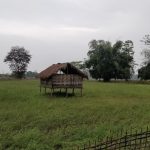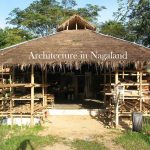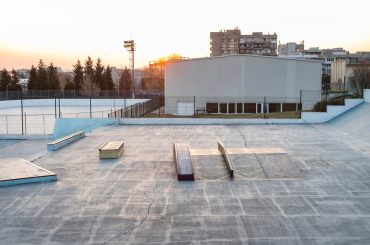India is of traditional country and following the rich ethnic culture and its traditions to date, Northeastern India is one of the unique traditions in India and has their own identity in case of traditions and the way they live, we are going to explore more the traditional architecture of Assam(the wonder of Northeastern India), Assam is the home of many wonders from amazing tea gardens, mighty Brahmaputra river, one-horned rhinos, and the royal tribal communities, Assam is also a home of architecture which we can even see today in some parts of the state, with various styles of architecture concerned to the region, it has a lot of stories to tell and we are going to explore it with patience and eagerness to know something new.
Architecture in Assam
Assam is one of many wonders in India, It has some untold story of architecture that we all are craving, Assam being one of the seven sisters of Northeastern India has some different styles of architecture called the Assam type buildings, but Assam has more architecture styles rather than the Assam type buildings.
Assam is one such state that follows the vernacular architecture to date, vernacular architecture- is houses built with all the available resources around the locality, vernacular architecture is also effectively proven to survive with the climate of the region.
In Assam, the architecture of houses is based on the climate people face and protects them from the calamities of nature.
Architecture in Assam Before the British
Before the British advent in India, Assam the home of nature and wonders have houses made of bamboo, timber, and thatch, the Assam traditional architecture so-called Ahom didn’t involve bricks and stones in their architecture until early 1700, bamboo and timber(woods) are used to construct buildings in Assam because it suits well for their climate.
Architecture in Assam After the British
The British changed the entire architectural style of India and in Assam, its impact even changed their tradition of constructing, The Assamese followed the vernacular architecture (mostly used wood, timbers, and bamboo) but the British implemented constructing the building with the help of bricks and stones for their longevity.
Types of Architecture style in Assam
Assam has four styles of architecture at the longest of its history. Vernacular architecture is the core tradition of Assam, they built with the help of available resources around them.
Ikra House
Ikra house commonly referred to as the “Assam type house” is common throughout Northeast India. The majority of such houses are used for residential purposes. Typically these houses are built with lightweight locally available materials like bamboo, wooden planks, thatch, etc. Such houses have a proper system of bamboo/wooden beam-column and fulfill the earthquake safety requirements of rectangularity and simplicity. Ikra houses are single-story structures consisting of brick or stone masonry walls up to about 1 m above the plinth. This masonry supports the walls consisting of bamboo woven together with a wooden frame and plastered with cement or mud plaster. The roof generally consists of GI sheets supported on wood/bamboo trusses, which laterally connect the parallel walls. The bamboo superstructure is connected to the masonry foundation walls using steel angles, and flats with bolts and nails. There were no reports of any significant damages to Ikra structures during past earthquakes.

Ikra house suited well with the climate and nature of Assam during all seasons, and it also cost less when compared with the modern housing architecture style of constructing with bricks, steel, and concrete.
Bamboo House
Today we see a house made of bamboo only in fancy resorts with premium services and high costs, but the Assamese used bamboo housing architecture for their purpose of living in accordance with nature, bamboo helped the Assam people more during the monsoon.

In the bamboo housing system, for the main structural member bamboo is used. The brick wall is used for modeling. And it is rigidly connected with a plinth as well as with bamboo. In this system, the wall is made of bamboo strips and it is plastered with mud. The houses are detailed out to combat the heavy monsoons. The roof of the house is built on local grass and can last up to 10 years before it is replaced again. The stilted part of the house is for protection against gentle floods. But even today we can use bamboo as our core construction material because it has more advantages than we can imagine.
Tensile strength
Bamboo has a higher tensile strength than steel because its fibers run axially.
Fire Resistance
The capability of bamboo to resist fire is very high and it can withstand temperatures up to 4000 C. This is due to the presence of high values of silicate acid and water.
Elasticity
Bamboo is widely preferred in earthquake-prone regions due to its elastic features.

Weight of bamboo
Bamboo due to its low weight is easily displaced or installed making it much easier for transport and construction. Unlike other building materials like cement and asbestos, bamboo poses no danger to health, They are cost-effective and easy to use, and they are especially in great demand in earthquake-prone areas.
Mud House
Even today in some parts of India rarely we can able to see mud houses, houses made of mud and cow dunk coated with grasses(straw) as their roof, mud house architecture is used to protect against the heat from the climate, it is a proven technique from the ancient time to sustain during the high summer vacations.

Mudhouses can be built with materials like clay, cow dunk, soil, silt, and grasses for roofs. Today we are using houses made of concrete cement which is made of chemicals mostly, materials like this don’t help our environment, mud is breathable and also helps to sustain the heat inside the house.
Chang House
The raised stilt house is common in the Himalayan region, it is used for constructing houses in the hilly regions, we can able to see a change in concept houses in upper Assam on the banks of Brahmaputra, the Mishing tribal community of Assam used to live in the chang concept houses as it is their traditional way of living, most of the Chang houses are built in rivers, forest, and vegetation regions.

It is even believed that the chang concept houses are first introduced by the mongoloid and the Mishing tribal people believe that they are the descendants of mongoloids. All the above four major architectural styles of Assam are of vernacular architecture and each architectural style is used to sustain through climate changes and weather of the region.
Present-day Assam Architecture
Today most of the Assam buildings are of bricks and stones with less wood, timber, and bamboo which is completely the other side of their traditional architectural style, the British impacted Assam by building houses with the help of bricks and stones, but even before the British advent in India, even Mughal emperors loved the way of buildings with bricks for their strength and longevity, but when we look back at the history the usage of bricks used in Assam in mid-1700 when king Rudra Singha of Ahom kingdom built the mighty Talatal Ghar in the Sivasagar, It is the first Assam architecture build with the help of bricks along with their traditional home architecture style.
The Kareng Ghar the so-called Garhgaon Palace is also a living example of the Ahom architecture style built by the Sunenphaa (Parramatta Singha) which is 15km away from the Sivsagar.
The Assam Bungalows
After the advent of the British in Assam, they Built a variety of buildings with newer architectural styles to the Assamese, it is called the British bungalow then and the Assam bungalow today, used for the administrative functions of the British government, the people of Assam also used the same pattern of architecture for their buildings, today is called the Assam bungalows.
Conclusion: the fading traditional architecture
Even though we speak of the pride of our traditions, traditional architecture and all, we are less concerned about the culture, and traditions that are fading in front of our eyes, all of the things that our ancestors used are effective for nature and also to the human body, living along the nature is the way our ancestors taught and it is also proven that they lived happy lives when compared with us.
The vernacular architecture style of Assam is one such example of living along with nature and to sustain through the region we live, every architecture around us holds history and benefits of its own and we do not care or learn from it, do use more things which are good for us and the nature around us.






